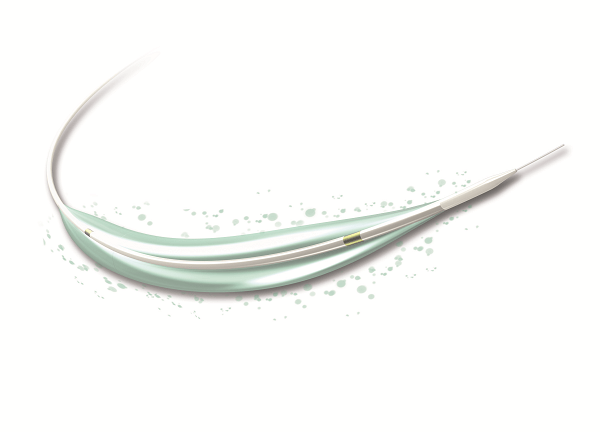 Drug-coated balloon treatment for vascular access stenosis offers a real alternative to plain balloon angioplasty, reducing the rate of reinterventions and prolonging the lifespan of arteriovenous fistulae, according to the most recent data from the APERTO Italian Registry.
Drug-coated balloon treatment for vascular access stenosis offers a real alternative to plain balloon angioplasty, reducing the rate of reinterventions and prolonging the lifespan of arteriovenous fistulae, according to the most recent data from the APERTO Italian Registry.
At the 2017 Charing Cross Symposium (CX; 25–28 April, London, UK), Matteo Tozzi (Varese, Italy) presented the latest data from the APERTO Italian Registry, which has been underway at four Italian centres since 2015. The objective of the prospective clinical trial is to demonstrate the efficacy and safety of Cardionovum’s Aperto drug-coated balloon shunt in a real-world scenario. The primary endpoints of the Registry are primary assisted patency and critical restenosis of the target lesion, while the secondary endpoint is non-critical restenosis. Patients were enrolled in the Registry if they exhibited asymptomatic stenosis ≥50%, symptomatic stenosis causing malfunctions of the vascular access, or symptomatic stenosis complication by thrombosis.
The Aperto balloon elutes paclitaxel (3μg/mm²) at a size of micronized paclitaxel just 0.1um, with SAFEPAX coating allow the maximisation of absorption into the vessel wall with a lower rate of paclitaxel particles loss during the navigation.
The APERTO Registry enrolled 150 patients with 176 stenoses. The majority (63%, n=93) of patients were males, and the mean age of the treated population was 67±12 years. Cardiovascular disease was present in 60.5% of patients, hypertension in 38.3%, diabetes in 34.6%, ischaemic heart disease in 34.6%, chronic obstructive pulmonary disease in 17.3%, and 23.5% were smokers.
Mean follow-up for the enrolled patients was 300 days (range 180–886 days, median 226 days) with a mean follow-up index of 0.78.
Of the 176 stenoses, 73 (41.5%) were autogenous vascular access stenoses, of which 17 (23.2%) were on the venous side and 56 (76.7%) were perianastomotyc. The remaining 103 (58.5%) stenoses were prosthetic vascular access stenoses, of which 41 (39.8%) were venous anastomoses, 27 (26.2%) venous outflow, 23 (22.3%) prostheses, and 12 (11.6%) arterial anastomoses. Regarding complications at 48 hours post-procedure, there were nine (6%) acute thromboses and 12 (8%) cases of residual stenosis <30%. In all cases the stenosis has been predilatated with high pressure balloon or scoring balloon.
Tozzi reported that a Kaplan-Meier curve estimation of the rate of primary assisted patency at one year was 78%. For autogenous vascular access, restenosis rates were 0%, 0% and 6.1% at 30, 180 and 360 days post-procedure, respectively. For prosthetic vascular access, restenosis rates were 0%, 2%, 9%, at 30, 180 and 360 days post-procedure, respectively.
“The use of a drug-coated balloon is a better alternative to plain-balloon angioplasty,” Tozzi concluded. “The results from this Registry show improved results compared with a plain balloon alone and a reduction in the number of reinterventions per year, prolonging the life of a fistula”; these results underlines, Tozzi adds, the best functionality of Safepax technology In the delivery of the drug to the target site.
Tozzi and colleagues now hope to expand their Registry in other European countries to include more centres and to allow the collection of more data for Improve the evidence of the use of Aperto drug-coated balloon in the real world.
Other collaborators included F Fontana and F Piacentino (Radiology, Circolo Teaching Hospital – Insubria University Varese, Italy) and M Franchin, M Tadiello, and N Rivolta (Vascular surgery, Circolo Teaching Hospital – Insubria University Varese, Italy).













